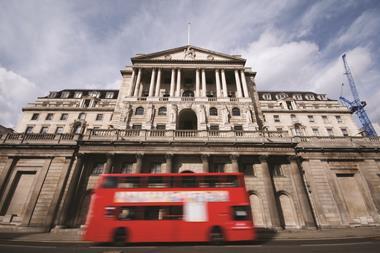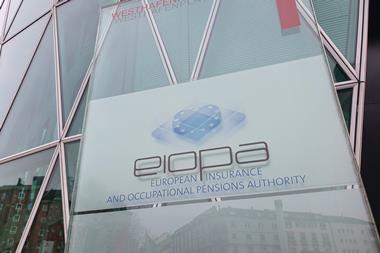UK banks and insurance companies can tolerate the shift to net-zero emissions by 2050, according to the Bank of England’s (BoE) first Climate Biennial Exploratory Scenario (CBES) published this week. However, they would see an annual reduction in profits amounting to 10-15% if averaged across three climate policy scenarios.
“Based on this exercise the costs of a transition to net zero look absorbable for banks and insurers, without a worrying direct impact on their solvency,” said Sam Woods, chief executive officer of the Bank’s Prudential Regulation Authority, drawing attention to countervailing measures available to the sector.
For example, the BoE has noted that insurance companies would be able to withstand the stress because less than 5% of the losses fall on shareholders. The rest would fall on policyholders in the form of higher insurance premiums.
Nevertheless, it also noted a steadily increasing trend in climate-related litigation affecting insurance companies, and the scope for professionals to be drawn into many different types of litigation.
Meanwhile, banks could protect their capital position by lowering their profits, reducing dividends, and charging higher interest to borrowers from carbon-intensive industries, for example.
To perform the CBES – dubbed the climate stress test – the BoE used two optimistic and one pessimistic scenarios.
The Early Action (EA) scenario envisages ambitious climate policy from the start while the Late Action (LA) includes a 10-year delay to net-zero transition policies. In both scenarios, global warming reaches 1.8°C by 2050 relative to pre-industrial levels. They contrast with a severe scenario involving No Additional Action (NAA), in which global warming increases by 3.3°C by 2050.
To comply with the CBES, the 18 participating financial institutions applied their balance sheets as they stood at end 2020 to the three different scenarios.
Banks, for example, modelled the effects on their loan books. The industries in which they projected the highest loss rates in the two transition scenarios were mining, oil and gas, manufacturing, transport, and wholesale and retail trade.

These sectors were projected by banks to have cumulative impairment rates of 35%, more than twice the aggregate projected impairment rate on corporate portfolios.
“It will be in the collective interests of financial institutions to support counterparties that have credible plans to adapt”
Sam Woods, CEO of the Prudential Regulation Authority
Economic effects vary according to scenario. For example, banks in the LA scenario would experience credit loss rates equivalent to £110bn (€129.5bn) – more than double the losses of the EA scenario. In the LA scenario, UK unemployment rises to 8.5% and the economy goes into recession for a short period.
In the NAA scenario, UK and global GDP growth are permanently lower and macroeconomic uncertainty increases. UK equity prices are just under 20% lower. Insurers’ asset values fall by 15% in the NAA scenario, compared with 8% and 11% in the EA and LA action scenarios, respectively.
UK banks and insurers are typically expected to respond to the scenarios in this exercise by following their existing net-zero emissions plans, including by increasing counterparty engagement to support the transition.
“It will be in the collective interests of financial institutions to support counterparties that have credible plans to adapt, and ultimately reduce their exposures to those sectors of the economy that are inconsistent with a net-zero policy,” Woods said.
He also drew attention to uncertainties in the projections, and warned that the losses would leave these sectors more vulnerable to other, future shocks.
“The drag on profitability would be very nasty for firms, but so long as they are able to continue to make sufficient profits to maintain their capital buffers, its impact on safety and soundness might be less material,” he said.










No comments yet